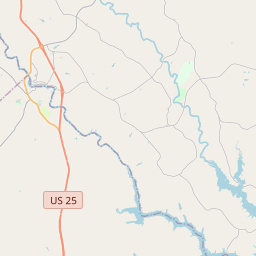Irvin Pitts Park / Ware Shoals
Historical marker location:
Ware Shoals, South Carolina
( Marker is on Power House Road, on the right when traveling east.)







© OpenStreetMap contributors
Loading...
Searching for other points of interest within 3 miles of this location.South Carolina was the site of the first battle of the Civil War. In April 1861, Confederate forces fired on Fort Sumter, a federal fort located in Charleston Harbor. The bombardment lasted for 34 hours and resulted in the surrender of the fort to the Confederates.
About Laurens County
Laurens County Timeline
Laurens County, located in South Carolina, has a rich and diverse history dating back to its earliest settlements in the late 18th century. Originally inhabited by Native American tribes, including the Cherokee, the area was eventually settled by European colonizers. In 1785, Laurens County was formed from Ninety-Six District and named after American Revolutionary War leader, Henry Laurens.
During the early 19th century, Laurens County was primarily an agricultural hub with the economy centered around cotton plantations. Slavery played a significant role in the region, with many enslaved African Americans working on these plantations. The county was also a hotbed for political activities, with several influential politicians emerging from the area during this time.
The American Civil War had a profound impact on Laurens County, as it did in much of the South. The region experienced numerous battles and skirmishes, leaving a lasting impact on both the physical landscape and the local community. Reconstruction following the war brought significant changes to the county, including the establishment of schools and infrastructure improvements.
In the 20th century, Laurens County continued to evolve and develop. The region diversified its economy, moving away from agriculture and into manufacturing and industry. This shift brought about considerable growth and urbanization, leading to the establishment of towns such as Clinton and Laurens as important economic centers. Today, Laurens County remains a vibrant community that embraces its rich history while looking ahead to a promising future.
During the early 19th century, Laurens County was primarily an agricultural hub with the economy centered around cotton plantations. Slavery played a significant role in the region, with many enslaved African Americans working on these plantations. The county was also a hotbed for political activities, with several influential politicians emerging from the area during this time.
The American Civil War had a profound impact on Laurens County, as it did in much of the South. The region experienced numerous battles and skirmishes, leaving a lasting impact on both the physical landscape and the local community. Reconstruction following the war brought significant changes to the county, including the establishment of schools and infrastructure improvements.
In the 20th century, Laurens County continued to evolve and develop. The region diversified its economy, moving away from agriculture and into manufacturing and industry. This shift brought about considerable growth and urbanization, leading to the establishment of towns such as Clinton and Laurens as important economic centers. Today, Laurens County remains a vibrant community that embraces its rich history while looking ahead to a promising future.
Laurens County Timeline
This timeline provides a glimpse into the major events and milestones that have shaped the history of Laurens County, South Carolina.
- 1785 - Laurens County is established as a county in South Carolina.
- 1790 - The county's population is recorded as 4,199.
- 1800 - The population of Laurens County reaches 5,612.
- 1811 - The historic courthouse in Laurens is built.
- 1838 - The Laurens Railroad Company is chartered.
- 1883 - The first electric lights are installed in Laurens.
- 1890 - The county's population exceeds 25,000.
- 1903 - Cottonseed oil mill is established in Laurens.
- 1936 - The Great Flood affects parts of Laurens County.
- 1940 - The population of Laurens County reaches 41,449.
- 1963 - Interstate Highway 385 is completed, connecting Laurens County to Greenville.
- 1974 - Clinton College, a historically black college, is founded in Clinton.
- 1990 - The population of Laurens County exceeds 69,500.
- 2003 - The County Museum of Art is opened in Clinton.
- 2018 - Laurens County celebrates its 233rd anniversary.